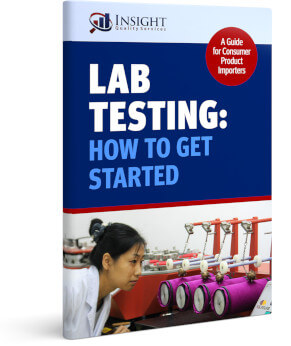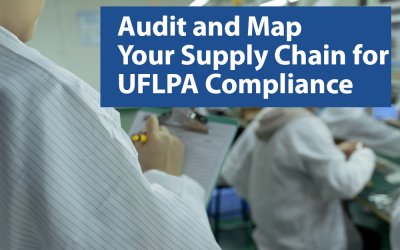In July 2020, Nikon Corporation had to recall about 150 units of its Nikon F6 film camera after finding that it contained levels of dibutyl phthalate (DBP), which exceeded the amount allowed by the European Union’s RoHS directive.
Importers who ship electrical and electronic products into the EU are generally aware of the RoHS (Restriction of Hazardous Substances) directive. But one thing that some aren’t aware of is that there have been two amendments to it. In fact, if Nikon had made its Nikon F6 film camera sometime in 2007, they wouldn’t have run afoul of the RoHS directive.
This article presents some key things you need to know about RoHS in the European Union, including the differences between RoHS 1 vs. RoHS 2 vs. RoHS 3. If you don’t want to risk facing severe financial and legal consequences, it is essential that you understand this directive.
Table of Contents
What is RoHS?

RoHS stands for “Restriction of Hazardous Substances,” and this directive applies to electrical and electronic equipment sold in the European market. The goal of the directive is to reduce the environmental effect and health impacts of electronics.
Here is a list of the ten restricted substances and their acceptable limits under RoHS.
- Mercury: < 0.1%
- Cadmium: < 0.01%
- Lead: < 0.1%
- Hexavalent chromium: < 0.1%
- Polybrominated Diphenyl Ethers: < 0.1%
- Polybrominated Biphenyls: < 0.1%
- Bis(2-Ethylhexyl) phthalate (DEHP) < 0.1%
- Dibutyl phthalate (DPB) < 0.1%
- Benzyl butyl phthalate (BBP) < 0.1%
- Diisobutyl phthalate (DIBP) < 0.1%
Since the adoption of RoHS in 2002, there have been modifications to its scope and the responsibilities of EEE product importers. In fact, you could be importing an electrical product that satisfies the hazardous substance threshold requirement and still be RoHS non-compliant.
These scope modifications are seen in the different amendments of the RoHS, namely RoHS 2 and RoHS 3. Let’s start by discussing the difference between RoHS 1 and RoHS 2.
The Difference Between RoHS 1 and RoHS 2
RoHS 1, also known as Directive 2002/95/EU, was published in 2002. Its scope was pretty simple: it restricted the use of the first six hazardous substances mentioned earlier. In addition, it required that all applicable products in the EU market after July 1, 2006, must pass the RoHS compliance.
The original version of the RoHS directive would later be revoked and replaced by RoHS 2 (also known as Recast RoHS 2 Directive 2011/65/EU) in July 2011. The RoHS 2 act simply expanded the scope of products covered in RoHS 1 and imposed new obligations on EEE importers and manufacturers.
 For instance, the RoHS 2 directive added medical devices and monitoring and control instruments to its categories of products and set different compliance deadlines for each category. RoHS 2 also provided a few exemptions to its rules, such as aerospace and military equipment, large-scale fixed installations (LSFI), non-road mobile machinery, and active implantable medical devices.
For instance, the RoHS 2 directive added medical devices and monitoring and control instruments to its categories of products and set different compliance deadlines for each category. RoHS 2 also provided a few exemptions to its rules, such as aerospace and military equipment, large-scale fixed installations (LSFI), non-road mobile machinery, and active implantable medical devices.
The RoHS 2 directive also mandated that importers or manufacturers of products under a RoHS category conduct a conformity assessment and affix CE markings on all compliant products.
The Introduction of RoHS 3 and its Implications
In 2015, RoHS was amended to include four additional substances to the original list of six. These substances include:
- Bis(2-Ethylhexyl) phthalate (DEHP) < 0.1%
- Dibutyl phthalate (DPB) < 0.1%
- Benzyl butyl phthalate (BBP) < 0.1%
- Diisobutyl phthalate (DIBP) < 0.1%
This amendment, also known as RoHS 3 or Directive 2015/863, took effect on July 22, 2019. RoHS 3 also adds “Category 11” products, which include 2-wheeled electric vehicles, vape pens, e-cigarettes, among others.
 Non-compliance with RoHS 3 can lead to huge fines and legal consequences. For example, the UK typically imposes fines of up to £5,000 per non-compliant product. It gets worse in Germany as you could be paying fines of up to €30,000 per product and imprisoned for up to 2 years.
Non-compliance with RoHS 3 can lead to huge fines and legal consequences. For example, the UK typically imposes fines of up to £5,000 per non-compliant product. It gets worse in Germany as you could be paying fines of up to €30,000 per product and imprisoned for up to 2 years.
Aside from the penalties, there is more to worry about, especially if you’ve worked hard to grow your brand. Cases of RoHS non-compliance don’t usually stay out of the public eye, no matter how minor the breach is. That’s why you must ensure that your products meet all the requirements of RoHS.
Are You Conducting Lab Tests to Help Ensure Compliance?
In general, to maintain compliance with RoHS, REACH, and other pieces of legislation around the world, it’s important to include lab testing in your quality control plan. At Insight, we have resources for lab testing. So feel free to reach out if you have questions about this service.
Also, we’ve put together a free lab testing guide that you can download if you are wondering how to get started.
Lab Testing: How to Get Started
As a consumer product importer, lab tests help you ensure that your products are compliant with regulations in the country of importation.
We’ve put together this guide to help you get started with lab testing so that you can make your products available for sale sooner rather than later. Avoid fines and customs issues by starting off on the right foot.





Thank you for crafting this summary of the RoHS timeline. Great work!
Glad you found it helpful, Sam!
Great Summary. Very clear and helpful. Excellent work!
Thank you for your comment! Glad you found this information helpful.
what is difference between 9/10 Rohs and 10/10 Rohs
Hi Ajay,
When you mention RoHS 9/10 and RoHS 10/10, are you referring to the 10 substances on the list?
As mentioned, the RoHS 10 restricted substances are:
Is the test for non-compliance paid for by the bureaucrat’s imposing the requirement? If so, can we be confident of compliance, but avoid the unnecessary expense of testing every time an obscure substance is added to the ever-growing list.
Would it make environmental sense to ban munitions literally made out of lumps of lead and uranium ?
Hi Rip Van Winkle,
As you’ve alluded to in your comment, the company selling the product will generally pay for the testing. That is unless a partner in their supply chain has done so for them.
Fortunately, when it comes to RoHS, the EU has not updated the regulation very often. They restricted the first six substances in 2002 and only added four more in 2015. This is very different from California Prop 65 in the US, which currently has a list of over 900 chemicals!
In general, it is a good idea to maintain an ongoing compliance program and lab test at a predetermined frequency. In manufacturing, things are not static — there can be variances in raw materials and practices over time, and quality fade is often a concern.
By implementing quality control measures, companies can verify their suppliers are producing goods that meet their specifications and avoid running afoul of regulations.
Hello, I am trying to figure out the RoHS and REACH certifications. I am looking at one source that indicates RoHS 3 was implemented on 6/15/15, but then in this article I read that RoHS 3 “took effect” on July 22, 2019. Is there a difference between the two dates? Please dispel the confusion. Thank you
Regards,
John
On 31 March 2015, RoHS was amended to include an additional four substances. The amendment took effect on 22 July 2019. In our original post there is direct link to this amendment.
Hey Insight Team,
thanks for the handy summary.
I know there were some exceptions for some industries like aviation..
Do you have a summary which industries have to follow which RoHs specification?
Hi Richard,
Here is some information from RoHS Guide that might be helpful.
I am running into confusion in attaining “RoHS 3” Certificates of Compliance for our product, because the vendor is suggesting that there, in fact, is no “RoHS 3”. “RoHS 3” is the 2015 amendment to RoHS 2 which got implemented in 2019, but it is still officially called “RoHS 2”. Can you clarify? I find all of this very confusing to the point where I am just asking the vendor if the product contains phthalates (and if so, how much?)
Yes, that is correct. RoHS 3 is a common way of referring to the RoHS 2 amendment from 2015.
Timeline:
Banning lead from electronics has created major issue as evidence by the list of products. Tin whisker growth and tin pest have been major problems in various industries. The amount of lead in landfills is negligible as the majority of lead is in batteries and recycled. Further a large portion of electronic equipment is sent to metal reclamation
Thank you for sharing your thoughts.
Great breakdown of the differences between RoHS 1, 2, and 3! It’s fascinating to see how the scope has expanded over the years to include more hazardous substances. I appreciate the clarity in explaining the implications for manufacturers and the environment. Looking forward to more insights on compliance trends!